Preston to refurbish the longest row of red phone boxes in the UK and make them a 'must-see' feature of the city
and live on Freeview channel 276
The condition of the nine Grade II-listed facilities - which line Market Street, alongside the former main post office building - has deteriorated since they were disconnected around a decade ago.
Stripped of their sole purpose, the boxes have also become a target for vandals, while attempts to reinvent as miniature food-and-drink outlets have come to nothing.
Advertisement
Hide AdAdvertisement
Hide AdPreston City Council acquired the iconic kiosks in 2021 and intended to put them “to creative use” as one of six pop-up projects to be delivered in the Harris Quarter, backed by cash awarded under the government’s Towns Fund.
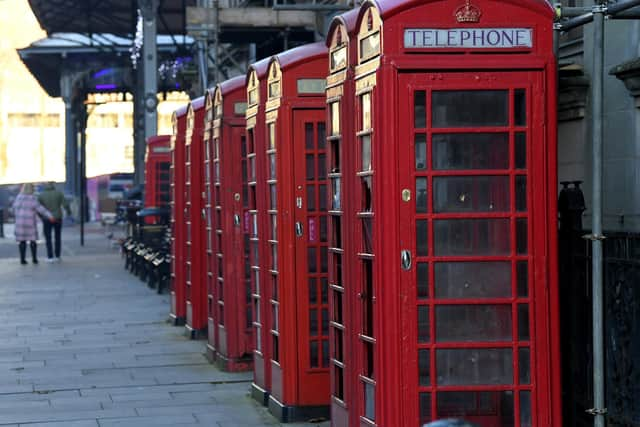

By last December, the Town Hall told the Lancashire Post that it hoped to be dialling up a facelift for the crumbling call boxes sometime during 2023 - but instead they have continued to decay, with an increasing number of their windows being smashed.
However, the city authority has now lodged an application with its own independent planning department seeking so-called “listed building consent” to fully refurbish the kiosks, while it continues to consider engaging ways in which they could be put to use once they have been restored to their former glory. Amongst the options for their future are the creation of specially-designed artwork or sound-and-vision displays.
If permission is granted, the boxes will be taken away to be stripped out and sandblasted, while the few remaining window panes - and the gaps where the rest should be - will be replaced with toughened glass. New ‘Telephone’ signage will be put in place and the kiosks will, of course, get a lick of red paint as part of their refit.
Advertisement
Hide AdAdvertisement
Hide Ad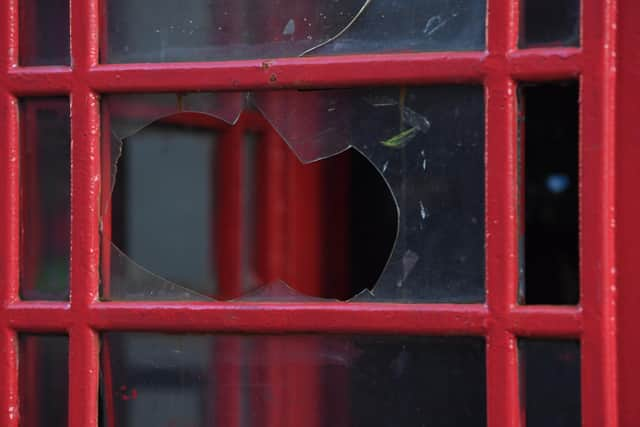

The most striking proposed change would be the inclusion of colour-changing floodlighting, which would complement plans for a new lighting scheme throughout the Harris Quarter, as revealed by the Post last month.
Peter Kelly, Preston City Council’s cabinet member for culture, said that the authority was “proud to celebrate Preston being the home of the UK's longest line of historic red telephone boxes”.
“[They are] an outstanding landmark in the heart of our city that we are committed to bringing back to life for this and future generations to enjoy.
"If we are successful in our application for listed building consent, we plan to undertake the necessary restoration works in 2024 to enable the iconic telephone boxes to be animated with dynamic and creative installations.
Advertisement
Hide AdAdvertisement
Hide Ad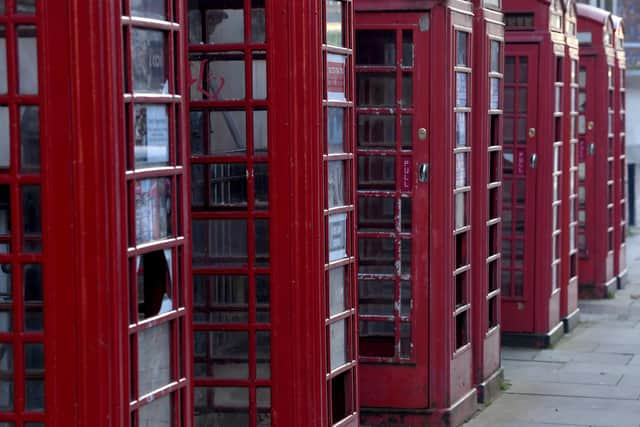

“We plan to work with local artists to commission contemporary light, audio-visual or graphic works to bring the telephone boxes alive, create a ‘must see’ and add to the vibrancy of the Harris Quarter,” Cllr Kelly added.
HOTLINE TO HISTORY
A heritage statement accompanying the application to renovate the Market Street phone boxes concludes that their historical and aesthetic value are of “high significance”.
Eight of the nine kiosks are arranged in pairs - although two have a slight gap between them - and it is these that form the longest line of such facilities in the country. A ninth call box, which stands alone near the fish market canopy, slightly separate from its neighbours, is likely to have been the first one installed on the city centre street, with a photograph showing an earlier cream version of the telephone kiosk in that location in the mid-1930s.
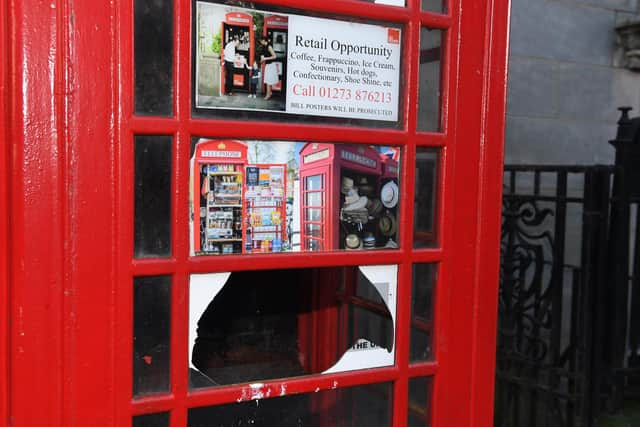

That box was later replaced with the “K6” design, of the type seen elsewhere on the thoroughfare, with the other facilities having been introduced at different times through until the 1960s.
Advertisement
Hide AdAdvertisement
Hide AdSix of the kiosks are adorned with the crowns of George V and George VI - and so date back to before 1953.
The heritage document - prepared by economic development company Growth Lancashire Limited – notes that some of the phone boxes appear to have been redecorated in the 1990s because they bear a gold-painted crown. That was a marker used by BT to indicate when the facilities had been given a spruce-up as part of a programme of works undertaken during that decade. However, all nine are described as now being in “poor condition”, in spite of further paint jobs in more recent years.
If the planned refurbishment is approved, the phone boxes will be repainted in the colour “currant red”, which was used on the later K8-style kiosks introduced in 1968. Although Growth Lancashire acknowledges that a slightly different shade was in use when the Market Street calling facilities were installed, it says that the boxes were likely to have been painted currant red by the time they were listed in 1988.
While it accepts that the use of the original colour “would be historically more appropriate”, it concludes that repainting in the later shade would “have no discernible consequence”.
Advertisement
Hide AdAdvertisement
Hide AdThe proposed sandblasting methodology will be tested in a discreet part of one of the kiosks - to ensure that the process does not damage the ironwork - before it is deployed across all of them.
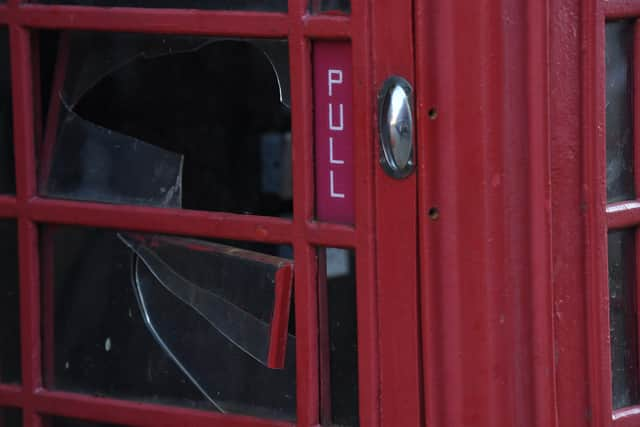

John Chesworth, chair of Preston's Towns Fund Strategic Board, said that the restoration of the phone boxes will add to “the improvements we're achieving in the Harris Quarter”.
“They are a small but fantastic city asset and bringing them back into use has always been on the agenda. Once back in use, I'm absolutely
positive they'll be a focal point for many people and will be well utilised."
Advertisement
Hide AdAdvertisement
Hide AdTHE RISE, FALL AND REINVENTION OF THE GREAT BRITISH PHONE BOX
Early 1900's - the first telephone boxes were installed on British streets.
1921 - the first standardised kiosk, the K1, was introduced.
1926 - the K2 design, in what would be come the iconic phone box red colour, was rolled out in London. It proved too big and expensive to install anywhere else in the country. Two hundred of these originals, designed by Sir Giles Gilbert Scott, remain in the capital today, out of the 1,700 originally put in place.
1927 - Scott's simplified follow-up, the K3, was introduced, in a cream colour. Now an exceptionally rare sight for phone box spotters.
Advertisement
Hide AdAdvertisement
Hide AdEarly 1930s - the K4, designed by the engineering department of the General Post Office (GPO), was created. It included a post box and stamp machine and was ultimately considered too cumbersome to roll out widely. There are only five examples left.
1934 - prototypes of a K5 - possibly intended to be made of concrete - were produced, but not on a large scale.
1935 - the K6 - as still seen today on Preston's Market Street was introduced. It was again designed by Sir Giles Gilbert Scott, this time to mark the silver jubilee of the coronation of King George V. The aim was to create something cost-effective that could be used across Britain. Over 60.000 K6s were installed until 1968 and about one in five of them still exist. The majority of the more than 3,000 listed phone boxes in the UK are K6s.
Late 1960s/early 1970s - slightly tweaked designs were introduced in the form of the K7 and K8, the latter being the last new phone box during the period that the network was the responsibility of the GPO.
Advertisement
Hide AdAdvertisement
Hide Ad1980 - The British Telecom (BT) brand was introduced, becoming independent of the GPO the following year.
1984 - following privatisation of BT, radically different phone box designs were rolled out by the company, the first of which was the stainless-steel-panelled KX100.
2008 - BT introduced its 'Adopt a Kiosk' scheme, which sought to find new uses for phone boxes, which had become rapidly redundant since the turn of the millennium as a result of the increase in mobile phone use. Some communities have turned their defunct phone boxes into boxes exchanges and other services.
Source: Growth Lancashire and elsewhere